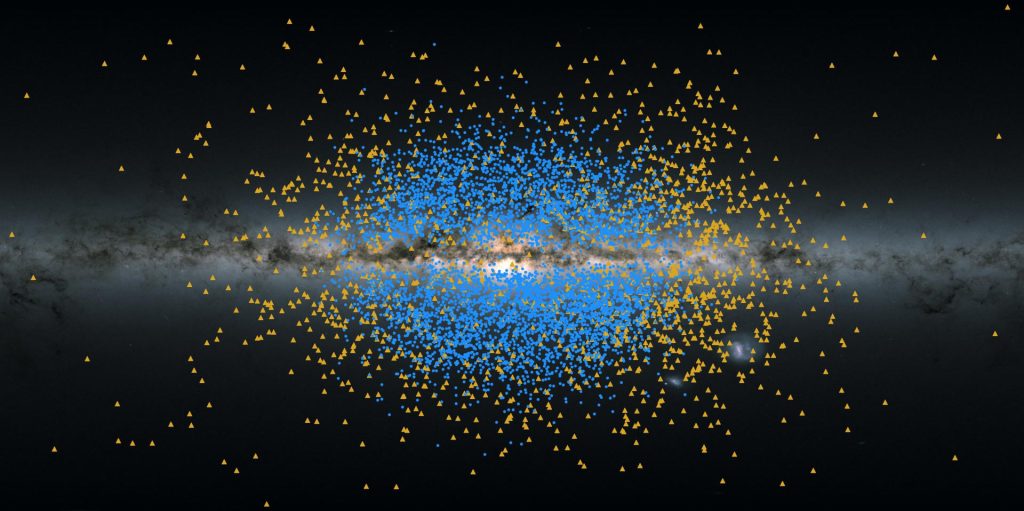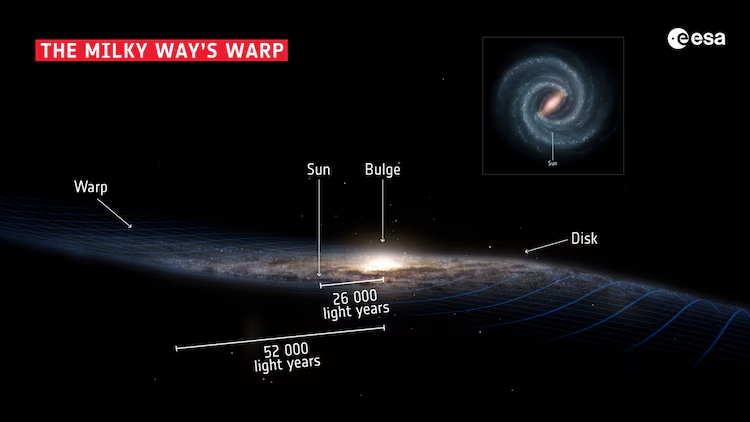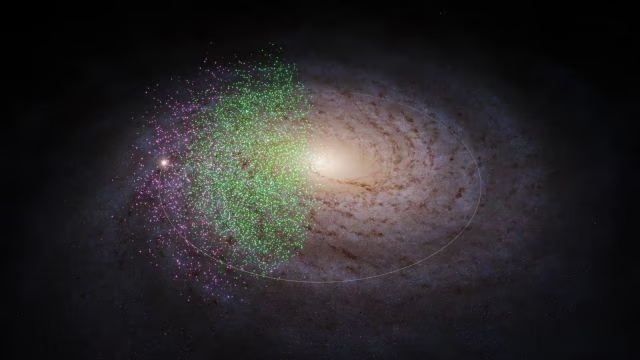Scientists have discovered what could be the Milky Way’s earliest building blocks and named them “Shiva” and Shakti.”

On Thursday, the Max Planck Institute for Astronomy revealed a significant discovery in astronomy: the potential identification of the earliest constituents of the Milky Way, labeled “Shiva” and “Shakti.” These entities appear to be the remnants of two galaxies that merged approximately 12 to 13 billion years ago with an earlier iteration of the Milky Way, playing a crucial role in its development and expansion.

The astronomers from the institute dubbed these components “Shakti” and “Shiva,” leveraging data from the European Space Agency’s Gaia satellite and the SDSS survey. This discovery can be likened to uncovering traces of a foundational settlement that ultimately evolved into a bustling metropolitan area, albeit on a cosmic scale.
The collisions and mergers of galaxies set various processes into motion. Each galaxy retains its own reservoir of hydrogen gas, and when they collide, these clouds become destabilized, leading to the formation of numerous new stars within them. Prior to the collision, both galaxies possess their own sets of stars, and these “accreted stars” only represent a portion of the stellar population in the newly-merged galaxy. The challenge lies in discerning which stars originated from each precursor galaxy once the merger is complete.

However, fundamental principles of physics offer valuable clues. During galaxy collisions and the subsequent mingling of their stars, most stars maintain certain fundamental properties that are tied to the speed and trajectory of the original galaxy they belonged to. Stars originating from the same precursor galaxies exhibit similar characteristics in terms of energy and angular momentum, the momentum associated with their rotation. In a galaxy’s gravitational field, both angular momentum and energy are conserved for stars in motion.
For this study, astronomers analyzed data from Gaia along with stellar spectra data obtained from the Sloan Digital Sky Survey (SDSS). The SDSS data offered detailed insights into the chemical compositions of the stars. “We noticed that among a specific range of metal-poor stars, there was a clustering around two distinct combinations of energy and angular momentum,” explained the researcher.
For their present search, Malhan and Rix used Gaia data combined with detailed stellar spectra from the Sloan Digital Sky Survey (DR17). The latter provided detailed information about the stars’ chemical composition.
“We observed that, for a certain range of metal-poor stars, stars were crowded around two specific combinations of energy and angular momentum. “Shakti and Shiva might be the first two additions to the ‘poor old heart’ of our Milky Way, initiating its growth towards a large galaxy,” said researcher Khyati Malhan, in a press statement. It was Malhan that named the two constituent galaxies Shiva and Shakti.
